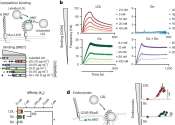Check your fridge for Trader Joe's fresh basil, linked to salmonella
Fresh organic basil tainted with salmonella and sold by Trader Joe's in 29 states has sickened at least 12 people, according to an alert issued Wednesday by the U.S. Centers for Disease Control and Prevention.
18 hours ago
0
0









